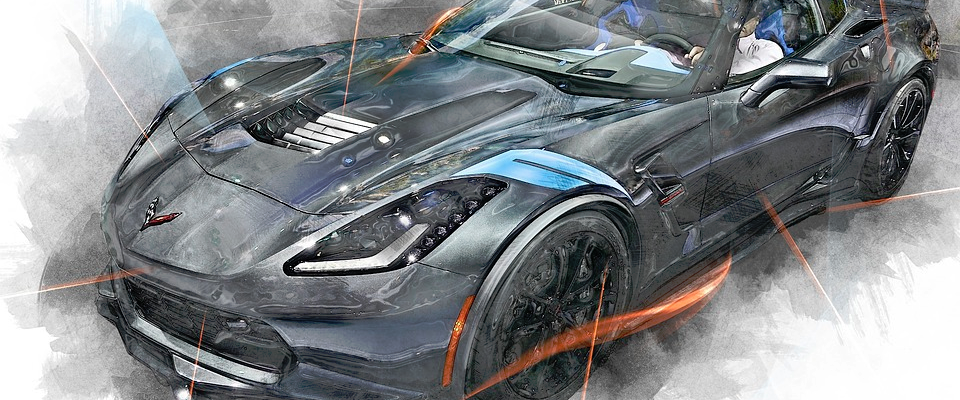
Table of Contents
- Introduction: Art Meets Automotive Design
- The Artistic Evolution of Cars
- Masterpieces on Wheels: Iconic Car Designs
- The Role of Technology in Automotive Artistry
- Customization: Bringing Personal Art to Cars
- Finding Unique and Artful Cars on Zemotor
- Conclusion: The Future of Cars as Art
Introduction: Art Meets Automotive Design
When we think of cars, we often think of them as a means of transportation. However, there is so much more to these machines than just getting from point A to point B. Over the years, automotive design has evolved into an art form, with designers and engineers pushing the boundaries of creativity to create some of the most stunning and unique vehicles on the road. In this blog post, we’ll dive into the fusion of automotive design and artistic expression, exploring the artistic evolution of cars, iconic car designs, the role of technology in automotive artistry, and how you can find unique and artful cars on the used car shopping website Zemotor.
The Artistic Evolution of Cars
From the earliest horseless carriages to the sleek and modern designs of today, cars have undergone a remarkable artistic transformation. The evolution of car design can be broken down into several key eras:
- Early Automobiles (Late 1800s – Early 1900s): The earliest cars were heavily influenced by horse-drawn carriages, featuring wooden bodies and large wheels.
- The Roaring 20s: As cars became more accessible, designs became more adventurous, with curvaceous lines and bold styling elements like oversized headlights and chrome accents.
- Streamlining (1930s – 1940s): This era saw a shift towards aerodynamic efficiency, with cars featuring smoother lines, teardrop shapes, and enclosed fenders.
- The Golden Age of Design (1950s – 1960s): A period marked by optimism and innovation, cars from this era are known for their flashy chrome, tailfins, and extravagant styling.
- The Wedge Era (1970s – 1980s): With a focus on angular lines and sharp edges, cars from this era reflected the futuristic and bold design trends of the time.
- Modern Designs (1990s – Present): Today’s cars blend art and technology, featuring sleek lines, advanced materials, and an emphasis on aerodynamics and sustainability.
Masterpieces on Wheels: Iconic Car Designs
Throughout the history of automotive design, there have been several cars that stand out as true works of art. Some of these masterpieces on wheels include:
- 1961 Jaguar E-Type: This stunning sports car is renowned for its beautiful curves and elegant proportions, with Enzo Ferrari famously calling it “the most beautiful car ever made.”
- 1959 Cadillac Eldorado: The epitome of American automotive excess, the Eldorado’s tailfins, chrome, and distinctive styling make it an icon of the Golden Age of Design.
- 1938 Bugatti Type 57SC Atlantic: A rare and valuable work of art, the Type 57SC Atlantic features a striking teardrop shape, a riveted spine, and elegant curves that epitomize the Art Deco movement.
- 1970 Lamborghini Miura: Often considered the first true supercar, the Miura’s aggressive wedge shape and low profile captured the imagination of the automotive world and continue to inspire designers today.
- 2006 Tesla Roadster: As the first production car to use lithium-ion battery cells, the Roadster revolutionized electric vehicle design and is widely regarded as the catalyst for the modern electric vehicle movement.
The Role of Technology in Automotive Artistry
As technology has advanced, it has played a critical role in shaping the artistic expression found in automotive design. Some key technological advancements that have influenced car design include:
- Computer-Aided Design (CAD): This software has allowed designers to create precise, intricate designs and test them in virtual environments before production.
- Advanced Materials: The development of materials like carbon fiber, aluminum, and high-strength steel has enabled designers to create lightweight, strong, and visually striking designs.
- 3D Printing: This technology has opened up new possibilities for car design, allowing for the creation of complex shapes and structures that would have been impossible using traditional manufacturing methods.
- Electric Powertrains: The advent of electric vehicles has given designers more freedom in their designs, as they no longer need to accommodate large engines and bulky fuel tanks.
Customization: Bringing Personal Art to Cars
Car customization has long been a popular way for individuals to express their creativity and artistic tastes. Some popular forms of customization include:
- Paint and Graphics: Custom paint jobs and vinyl wraps allow for endless color combinations and intricate designs, turning cars into unique, moving canvases.
- Body Kits and Aerodynamics: These modifications can drastically alter a car’s appearance, giving it a distinctive, personalized look.
- Interior Upgrades: Custom upholstery, dashboard designs, and other interior modifications can transform a car’s cabin into a bespoke, artistic space.
Finding Unique and Artful Cars on Zemotor
If you’re in the market for a unique, art-inspired car, Zemotor is a great place to start your search. This used car shopping website offers a wide selection of vehicles, making it easy to find the perfect artistic automobile that suits your tastes and budget. Whether you’re looking for a classic car with timeless design or a modern vehicle with cutting-edge styling, Zemotor has something for everyone.
Conclusion: The Future of Cars as Art
As we move forward into the future, the fusion of automotive design and artistic expression will continue to evolve. Advances in technology and materials will give designers even more creative freedom, while the growing popularity of electric vehicles and autonomous driving will open up new possibilities for unique and innovative car designs. For car enthusiasts and art lovers alike, there’s never been a more exciting time to celebrate the intersection of art and automobiles.